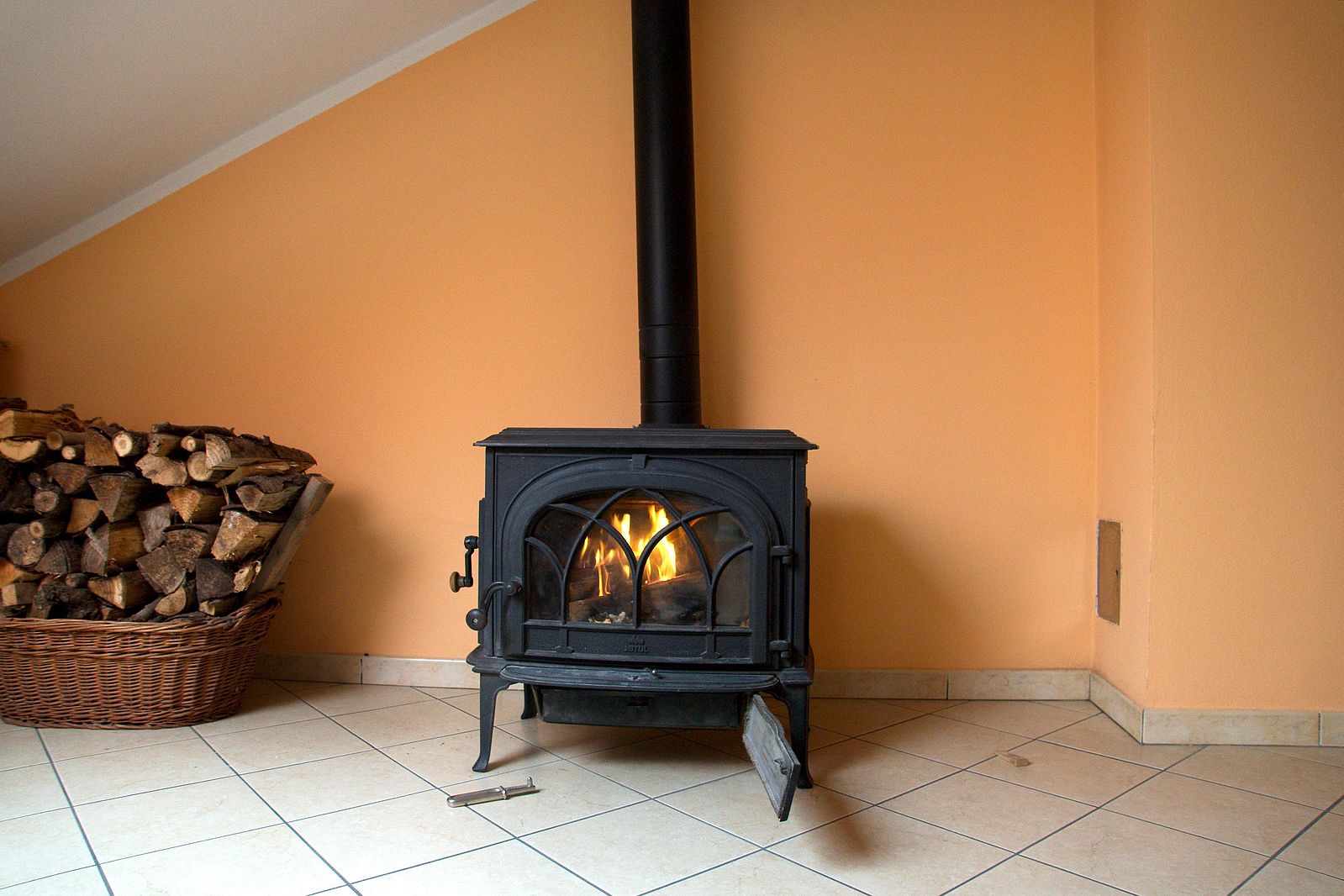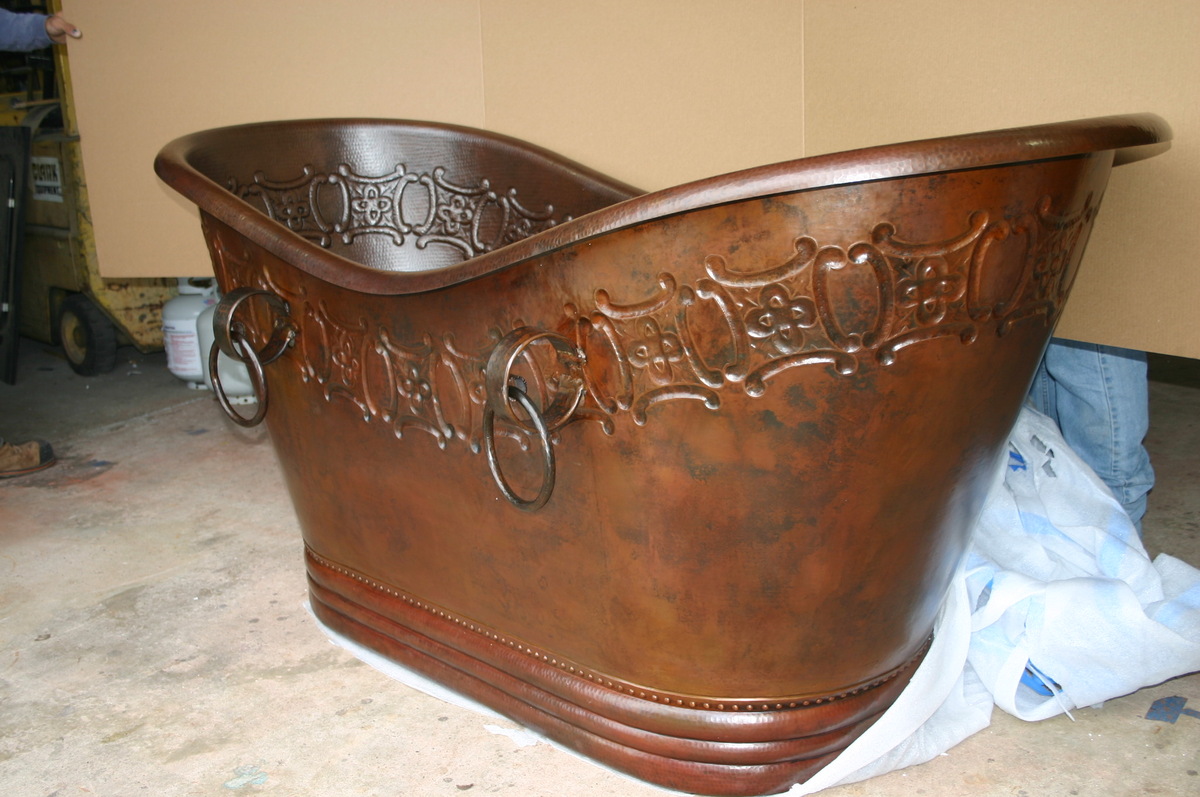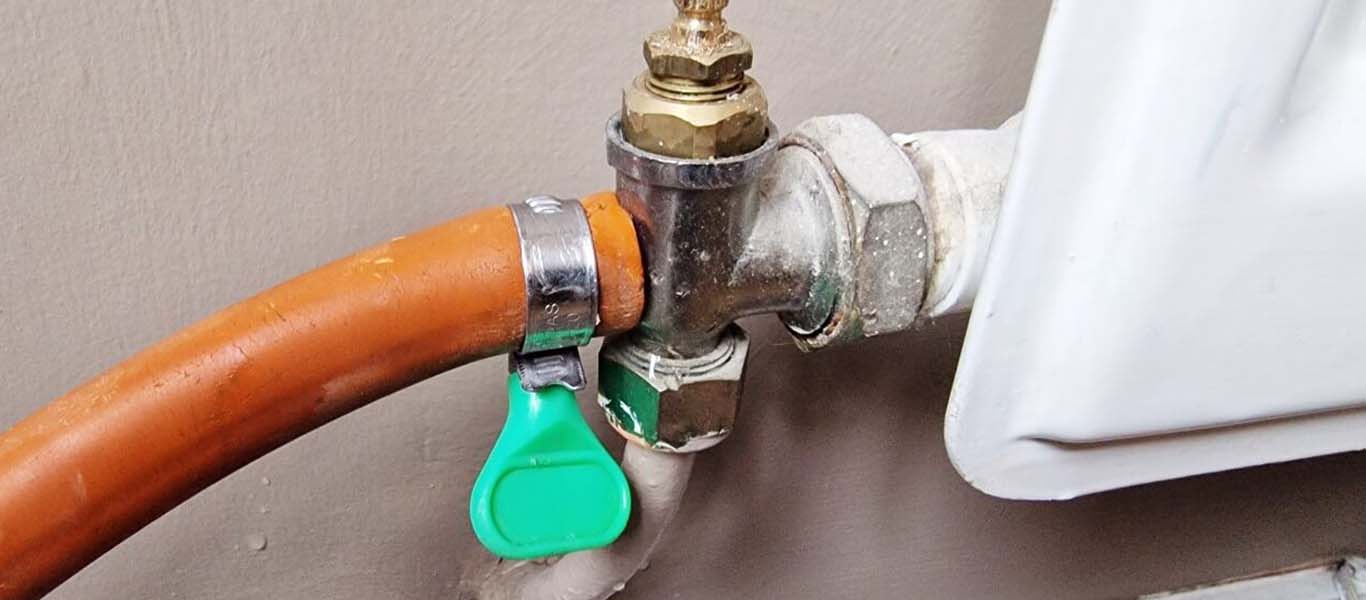Home>Home Appliances>Heating & Cooling>When Was Central Heating Invented


Heating & Cooling
When Was Central Heating Invented
Modified: October 20, 2024
Discover the history of central heating and cooling systems. Learn about the invention and evolution of heating and cooling technology. Explore the impact of central heating on modern living.
(Many of the links in this article redirect to a specific reviewed product. Your purchase of these products through affiliate links helps to generate commission for Storables.com, at no extra cost. Learn more)
Introduction
Central heating has revolutionized the way we live, providing warmth and comfort in our homes and workplaces. The history of central heating is a fascinating journey that spans centuries, marked by remarkable innovations and advancements in heating technology. From ancient heating methods to the sophisticated systems of today, the evolution of central heating has significantly impacted human civilization.
Throughout history, the quest for warmth during colder seasons has been a driving force behind the development of heating systems. The invention of central heating has not only improved living conditions but has also contributed to the progress of various industries and the overall well-being of societies.
As we delve into the origins and evolution of central heating, we will uncover the ingenuity and perseverance of early innovators who laid the foundation for the sophisticated heating systems we rely on today. Join us on this captivating journey through time as we explore the fascinating story of central heating and its profound impact on human comfort and progress.
Key Takeaways:
- Central heating, from ancient hypocausts to modern systems, reflects human creativity and innovation in the pursuit of indoor warmth. It has revolutionized comfort and sustainability, shaping the way we experience heating.
- The journey of central heating showcases the relentless quest for warmth and comfort throughout history. From early civilizations to modern technology, the evolution of heating systems continues to drive innovation and improvement.
Read more: What Is Central Heating
Early Heating Systems
Early civilizations ingeniously devised various methods to combat the biting cold, laying the groundwork for the development of modern heating systems. One of the earliest known heating systems dates back to ancient Rome, where the concept of hypocaust was employed. This innovative system utilized a network of raised floors and channels beneath them, allowing hot air from a furnace to circulate and warm the living spaces above. The hypocaust system exemplified the Romans' advanced engineering prowess and their commitment to enhancing domestic comfort.
Similarly, the ancient Greeks utilized a form of central heating known as a "stove" to warm their homes. These stoves, typically made of clay or brick, were designed to contain a fire and distribute heat throughout the living spaces. The concept of central heating continued to evolve, with the utilization of underfloor heating and radiant heat systems in various ancient civilizations, including the Korean Ondol and the Chinese Kang.
In medieval Europe, the development of central heating systems progressed, albeit at a slower pace. Castles and large estates featured elaborate central heating systems, such as the use of large hearths and intricate flue systems to distribute heat. These early heating methods, while rudimentary by today's standards, represented significant strides in the quest for indoor comfort during colder seasons.
The evolution of early heating systems was not limited to Europe and Asia. In the Americas, indigenous cultures developed their own innovative heating solutions. For instance, the Ancestral Puebloans constructed dwellings with strategically positioned windows to maximize solar heat gain, showcasing their deep understanding of passive solar heating principles.
The ingenuity and resourcefulness of ancient civilizations in developing early heating systems laid the groundwork for the revolutionary advancements that would follow. These early systems, though simple in design, reflect the human desire for warmth and comfort, driving the continuous innovation and improvement of heating technologies throughout history.
The Invention of Central Heating
The pivotal moment in the history of heating technology came with the invention of central heating. The concept of central heating, as we understand it today, can be attributed to the innovative efforts of the ancient Romans. The hypocaust system, a groundbreaking development in heating technology, marked the birth of central heating. This ingenious system utilized a network of raised floors and channels beneath them, allowing hot air from a furnace to circulate and warm the living spaces above. The hypocaust system not only provided efficient heating but also demonstrated the Romans' remarkable engineering prowess and their commitment to enhancing domestic comfort.
The concept of central heating continued to evolve over the centuries, with notable advancements in various parts of the world. In the 18th century, the Industrial Revolution spurred significant progress in heating technology. The development of steam-based heating systems, pioneered by inventors such as Angier March Perkins and William Strutt, laid the foundation for modern central heating. These early steam heating systems marked a significant leap forward, enabling the efficient distribution of heat to multiple areas within a building.
However, it was the 19th century that witnessed a transformative breakthrough in central heating technology. The pioneering work of American inventor and entrepreneur, Angier March Perkins, led to the creation of the first practical and commercially successful central heating system. Perkins' system utilized a furnace to heat air, which was then distributed through ducts to various rooms in a building. This innovative approach to central heating revolutionized indoor comfort and set the stage for the widespread adoption of central heating systems in residential and commercial settings.
The invention of central heating not only transformed the way people experienced warmth but also had a profound impact on architecture and urban development. The ability to efficiently heat large buildings and homes led to the construction of grand edifices and expansive residential complexes, marking a significant shift in architectural design and urban planning.
The invention of central heating stands as a testament to human ingenuity and the relentless pursuit of comfort and convenience. This pivotal development laid the groundwork for the sophisticated heating systems that we rely on today, shaping the way we live and interact with our built environments.
The first central heating system was invented by the ancient Romans around 1000 B.C. They used a system called hypocaust, which circulated hot air through pipes under the floors of buildings.
Spread and Development of Central Heating Technology
The invention of central heating marked a transformative milestone in the history of heating technology, setting the stage for its widespread adoption and continuous development. As the benefits of central heating became increasingly evident, its popularity spread rapidly, leading to significant advancements and refinements in heating technology.
During the 20th century, central heating technology experienced a period of remarkable expansion and innovation. The introduction of forced-air heating systems, which utilized ducts to distribute heated air, revolutionized the way buildings were heated. This advancement allowed for more precise temperature control and enhanced comfort, leading to its widespread integration into residential and commercial structures.
The development of hydronic heating systems, which utilized hot water or steam to distribute heat, further diversified the central heating landscape. These systems offered efficient and consistent warmth, making them a popular choice for a wide range of applications, from residential homes to large industrial complexes. The versatility and effectiveness of hydronic heating systems contributed to their enduring presence in the heating industry.
As central heating technology continued to evolve, the integration of digital thermostats and smart heating controls brought a new level of convenience and energy efficiency to heating systems. These technological advancements allowed users to precisely regulate temperatures and optimize energy consumption, leading to significant cost savings and environmental benefits.
The widespread adoption of central heating technology also spurred the development of alternative energy sources for heating, including solar thermal systems and geothermal heat pumps. These eco-friendly solutions offered sustainable alternatives to traditional heating methods, aligning with the growing emphasis on environmental conservation and energy efficiency.
The development of radiant heating systems, which delivered heat directly to surfaces within a building, represented another significant advancement in central heating technology. This approach provided a more uniform and comfortable heating experience, eliminating drafts and cold spots commonly associated with traditional heating systems.
The continuous evolution of central heating technology has been driven by a relentless pursuit of efficiency, comfort, and sustainability. Today, modern central heating systems integrate cutting-edge technologies, such as heat pumps, high-efficiency boilers, and advanced control systems, to deliver unparalleled performance and energy savings.
The spread and development of central heating technology have transformed the way we experience warmth and comfort in our living and working environments. From ancient Roman hypocausts to the sophisticated heating systems of today, the journey of central heating technology reflects the enduring human quest for innovation and improvement in the pursuit of indoor comfort.
Modern Central Heating Systems
Modern central heating systems represent the culmination of centuries of innovation and technological advancement in the pursuit of efficient, reliable, and sustainable heating solutions. These contemporary systems have redefined the way we experience warmth and comfort in our homes, workplaces, and public spaces, integrating cutting-edge technologies to deliver unparalleled performance and energy efficiency.
One of the defining features of modern central heating systems is their versatility and adaptability to diverse heating needs. From traditional forced-air heating systems to advanced hydronic heating solutions, modern central heating systems offer a range of options to suit various building types and heating requirements. This flexibility allows for customized heating solutions that cater to the specific needs of residential, commercial, and industrial settings.
The integration of smart heating controls and digital thermostats has revolutionized the way we manage and optimize heating systems. These advanced control systems enable precise temperature regulation, energy monitoring, and remote access, empowering users to maximize comfort while minimizing energy consumption. The ability to program heating schedules and adjust settings remotely has significantly enhanced convenience and energy efficiency, leading to cost savings and reduced environmental impact.
Furthermore, the widespread adoption of alternative energy sources, such as solar thermal systems and geothermal heat pumps, has ushered in a new era of sustainable heating solutions. Modern central heating systems leverage renewable energy technologies to harness the power of the sun and the earth, reducing reliance on traditional fossil fuels and lowering carbon emissions. This shift towards eco-friendly heating options aligns with the growing emphasis on environmental conservation and energy sustainability.
The integration of high-efficiency boilers, heat pumps, and radiant heating technologies has further elevated the performance of modern central heating systems. These advancements have resulted in more uniform heating distribution, improved energy utilization, and enhanced comfort, setting new standards for heating system efficiency and reliability.
In addition, the seamless integration of modern central heating systems with smart home automation platforms has transformed the way we interact with our heating infrastructure. The ability to synchronize heating systems with other smart devices and applications enables a holistic approach to indoor comfort management, enhancing overall living experiences and convenience.
The evolution of modern central heating systems embodies the relentless pursuit of innovation and improvement in the quest for indoor comfort. As technology continues to advance, the future holds the promise of even more sophisticated and sustainable heating solutions, further enhancing the way we experience warmth and comfort in our built environments.
Read more: Why Is Central Heating Not Working
Conclusion
The evolution of central heating stands as a testament to human ingenuity and the enduring quest for warmth and comfort. From the ancient hypocausts of Rome to the sophisticated heating systems of today, the journey of central heating technology reflects the remarkable progress and innovation that have shaped the way we experience indoor warmth.
The invention of central heating marked a pivotal moment in the history of heating technology, revolutionizing the way buildings were heated and setting the stage for its widespread adoption. The subsequent spread and development of central heating technology led to remarkable advancements, including the integration of smart heating controls, alternative energy sources, and high-efficiency heating technologies. These innovations have not only enhanced comfort and convenience but have also contributed to energy conservation and environmental sustainability.
Modern central heating systems offer unparalleled versatility, efficiency, and sustainability, catering to diverse heating needs and aligning with the growing emphasis on eco-friendly solutions. The integration of advanced technologies, such as smart heating controls and renewable energy sources, has redefined the way we manage and optimize heating systems, leading to significant cost savings and reduced environmental impact.
As we look to the future, the evolution of central heating technology continues, promising even more sophisticated and sustainable heating solutions. The relentless pursuit of innovation and improvement in the quest for indoor comfort drives the ongoing development of heating technologies, ensuring that future generations will experience warmth and comfort in ways that were once unimaginable.
In conclusion, the story of central heating is a testament to human creativity, resilience, and the unwavering commitment to enhancing the quality of life. The journey from ancient heating methods to modern central heating systems is a testament to the enduring human desire for warmth and comfort, driving continuous innovation and improvement in the pursuit of indoor well-being.
Frequently Asked Questions about When Was Central Heating Invented
Was this page helpful?
At Storables.com, we guarantee accurate and reliable information. Our content, validated by Expert Board Contributors, is crafted following stringent Editorial Policies. We're committed to providing you with well-researched, expert-backed insights for all your informational needs.















0 thoughts on “When Was Central Heating Invented”